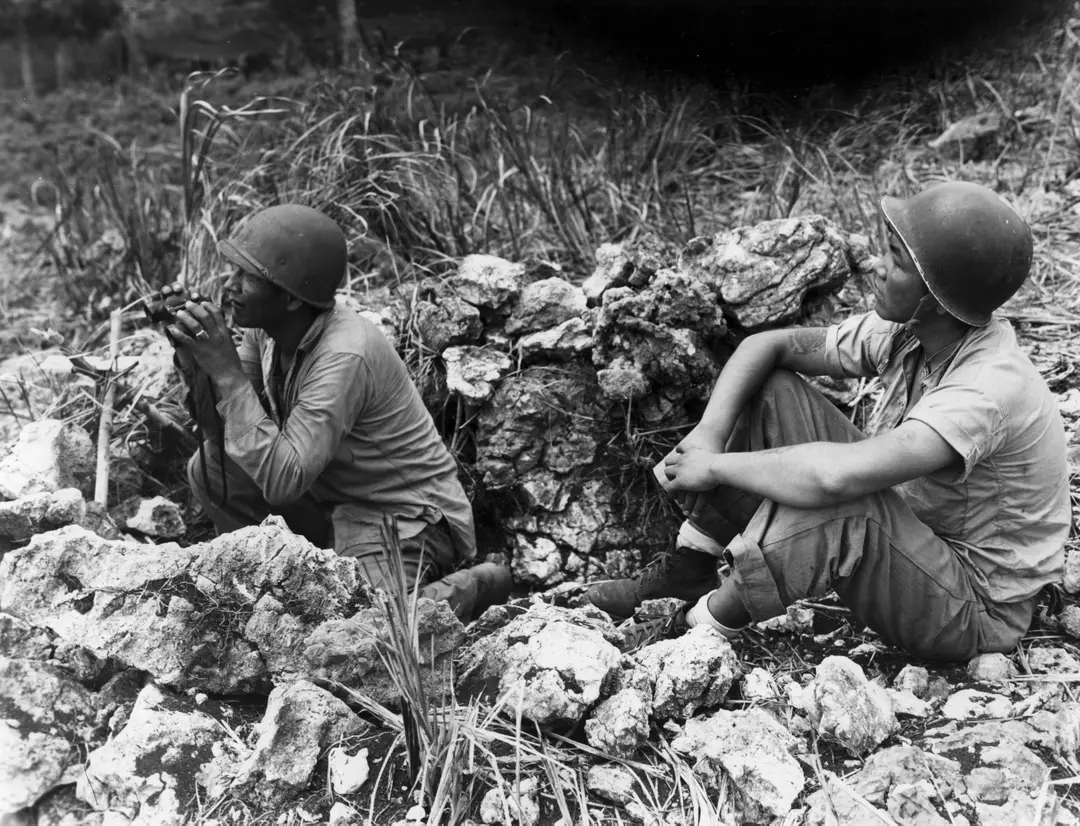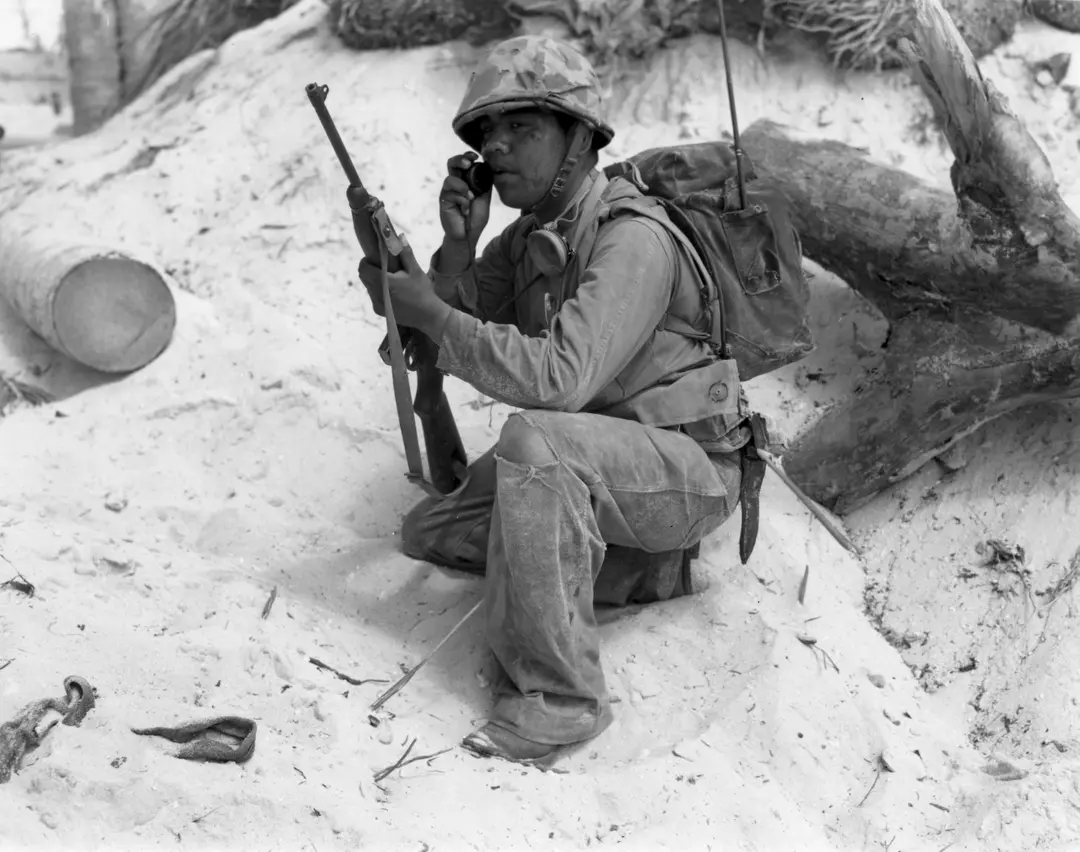Discover how Native American Code Talkers revolutionized military intelligence during both World Wars, using their native languages to create unbreakable codes that played a crucial role in key victories.
An overheard conversation among Choctaw soldiers during World War I sparked a groundbreaking strategy – Native American Code, that would confound enemy forces and save countless lives.
Native American soldiers have consistently played pivotal roles in U.S. military history. However, it was during the World Wars that their unique contribution through the use of Indigenous languages became a game-changer. These languages, largely unknown outside their communities, formed the foundation of a secret communication strategy that would baffle enemy intelligence and prove instrumental in winning crucial battles.

The Birth of Native American Code Talking: A Strategic Epiphany
In 1918, three Choctaw soldiers serving in France were overheard speaking their native language by an officer. This led to a realization: their language, unfamiliar to outsiders and with no extensive written history, could serve as an ideal code for transmitting secret messages. This innovative idea was quickly put into action. Choctaw soldiers, now known as “phone talkers,” were tasked with transmitting vital messages over field telephones.
Although World War I ended soon after, this strategy laid the groundwork for future military communications. During World War II, the approach expanded to include more than a dozen Native languages, with Navajo becoming the most famous among them. This practice would later be known as “Native American Code talking.”
The Irony of Using Suppressed Languages to Save Lives
It’s deeply ironic that the U.S. military relied on languages that the government had long sought to eradicate. For decades, Native American children were forced into boarding schools where they were punished for speaking their native tongues. Yet, on the battlefield, these same languages became invaluable tools for safeguarding soldiers and securing victory.

Serving a Nation That Once Sought to Erase Them
The Choctaw, one of the “Five Civilized Tribes” of the southeastern United States, traditionally lived off farming, hunting, and fishing. Despite aligning with the U.S. during the War of 1812, they were later coerced into ceding vast tracts of land. The Indian Removal Act of 1830 forced them to relocate to present-day Oklahoma, a journey marked by immense suffering and death, now remembered as the “Trail of Tears.”
When the United States entered World War I in 1917, Native Americans were still not granted full citizenship, and government-run schools continued to suppress their cultures. Despite this, thousands of Native Americans enlisted to fight. Among them were nearly 1,000 from 26 tribes who joined the 36th Division, comprising men from Texas and Oklahoma.
“They recognized the need to protect their homeland,” said Judy Allen, senior executive officer of tribal relations for the Choctaw Nation of Oklahoma. “So, they volunteered and were quickly deployed.”
The Role of Phone Talkers in World War I
By the summer of 1918, the 36th Division had arrived in France, poised to participate in the Meuse-Argonne campaign, a significant offensive on the Western Front. The war’s outcome was still uncertain.
“World War I was decided very late,” said William C. Meadows, a Native American studies professor and code talking expert at Missouri State University. “It wasn’t like World War II, where victory was clearer.”

One of the major challenges for the Allies was the Germans’ ability to intercept and decipher their communications. Their Native American Code, often based on European languages or mathematical formulas, were easily broken. According to Allen, “We couldn’t keep anything secret.”
A story circulated about a German soldier interrupting a U.S. Signal Corps member to mock his use of Native American Code words. Sending runners was equally ineffective, as about one in four were captured or killed. Other communication methods, such as color-coded rockets and carrier pigeons, were too unreliable.
As the Meuse-Argonne campaign commenced, a company commander overheard three of his soldiers—Solomon Lewis, James Edwards, and Ben Carterby—speaking in Choctaw. Realizing the potential of this little-known language, he quickly persuaded his superiors to deploy Choctaw speakers at various field company headquarters.
On October 26, 1918, Choctaw speakers were first used in a mission to withdraw two companies from the front. After successfully completing this task, they played a key role in an attack on a heavily fortified German position, Forest Ferme.
“The enemy’s complete surprise showed they couldn’t decode the messages,” Colonel A.W. Bloor later wrote in an official report. The battle’s tide turned within 24 hours, and the Allies were soon on the offensive.
At least 19 Choctaw soldiers underwent brief training to develop Native American Code words for military terms they lacked. For example, they used “big gun” for artillery and “stone” for grenade. This marked the beginning of true Native American Code talking, where soldiers didn’t just communicate in a rare language but created a specialized vocabulary for military use.
“They created these code words, but the war ended on November 11, so they didn’t get much chance to use them,” Meadows said. However, Colonel Bloor praised the training session’s success and expressed confidence that further results would have been achieved had the war continued.

A captured German soldier later admitted that his side couldn’t make sense of the Choctaw speakers, whom Allen credited with likely hastening the war’s end and saving countless lives. The bitter irony was not lost on them: the same government that had tried to erase their language was now relying on it to win the war.
Other Native American soldiers from at least five nations used their languages to confuse the Germans, although they didn’t develop an intentional code as the Choctaws did.
Native Code Talkers in World War II
The impact of Indigenous coders grew even more significant during World War II when the U.S. government specifically recruited Comanche, Hopi, Meskwaki, Chippewa-Oneida, and Navajo members for this work. The Navajo developed the most complex Native American Code, with over 600 terms, primarily used in the Pacific Theater. Their work was crucial for key victories, including those at D-Day and Iwo Jima.
One of their Native American Code translated Navajo words into English letters to spell out messages. For instance, the Navajo word “wo-la-chee” (ant) represented the letter “A.” Another code involved word-to-word translations, but improvisation was necessary for some terms. Since Navajo lacked a word for “submarine,” they agreed to use “besh-lo,” meaning “iron fish.”

“Even other tribe members back home couldn’t understand the coded vocabulary,” Meadows noted. Beyond the handful of intentionally coded Native American languages, the Allies used over two dozen others on a more ad hoc basis. Not a single code talker message was deciphered by the opposition in either World War.
Although the Navajo Native American Code talkers are the most famous, partly due to the Hollywood film “Windtalkers,” other tribes also made significant contributions. The Navajo received Congressional recognition in 2000, while the remaining tribes were honored in 2008 for their “dedication and valor.”
“Honoring Native American Code talkers is long overdue,” acknowledged a bill passed by Congress. A medal ceremony took place in November 2013 in Washington, D.C., with 33 tribes represented. “My regret,” said Allen, “is that none of the Choctaw code talkers or their children lived to see this moment.”